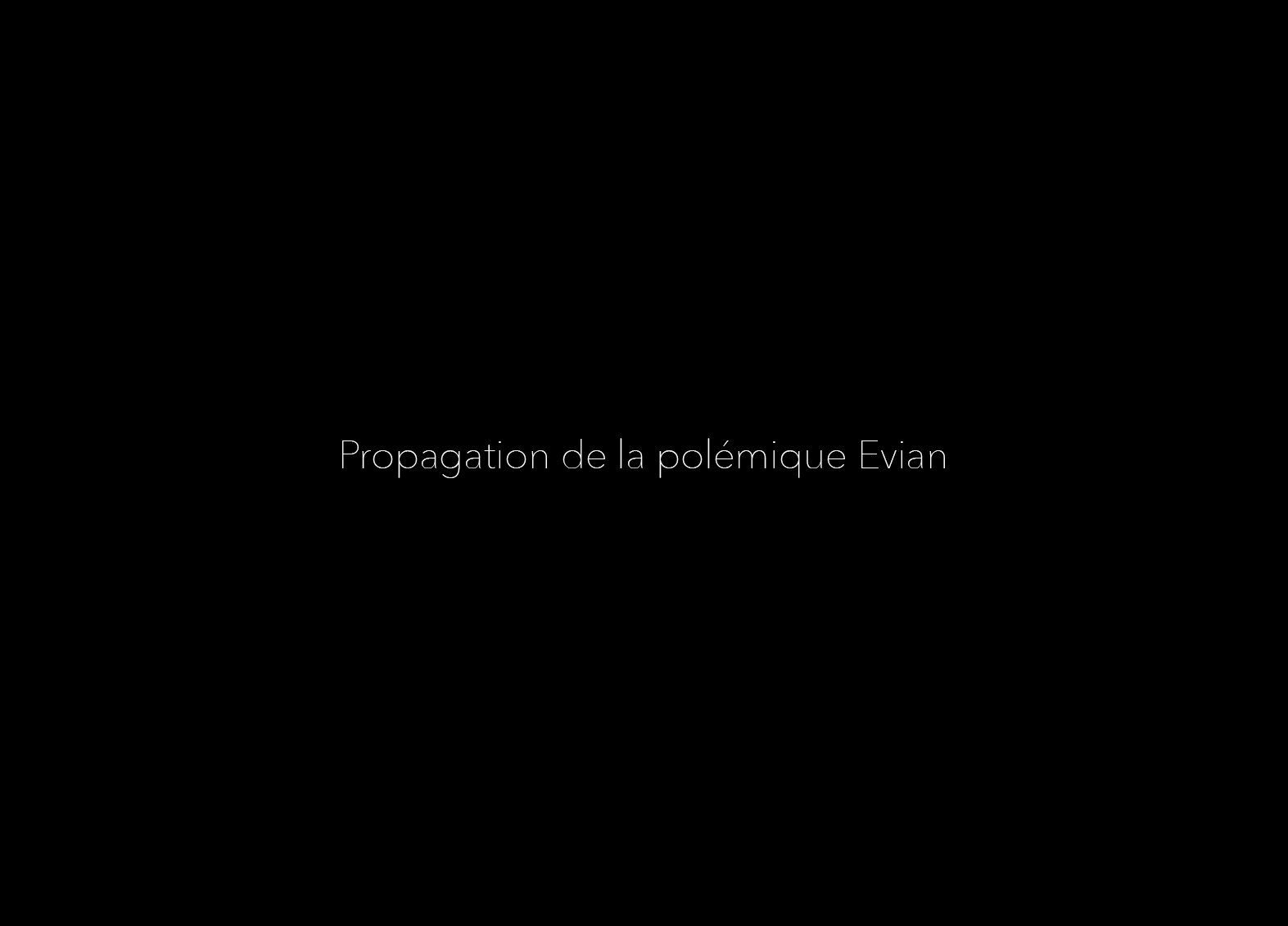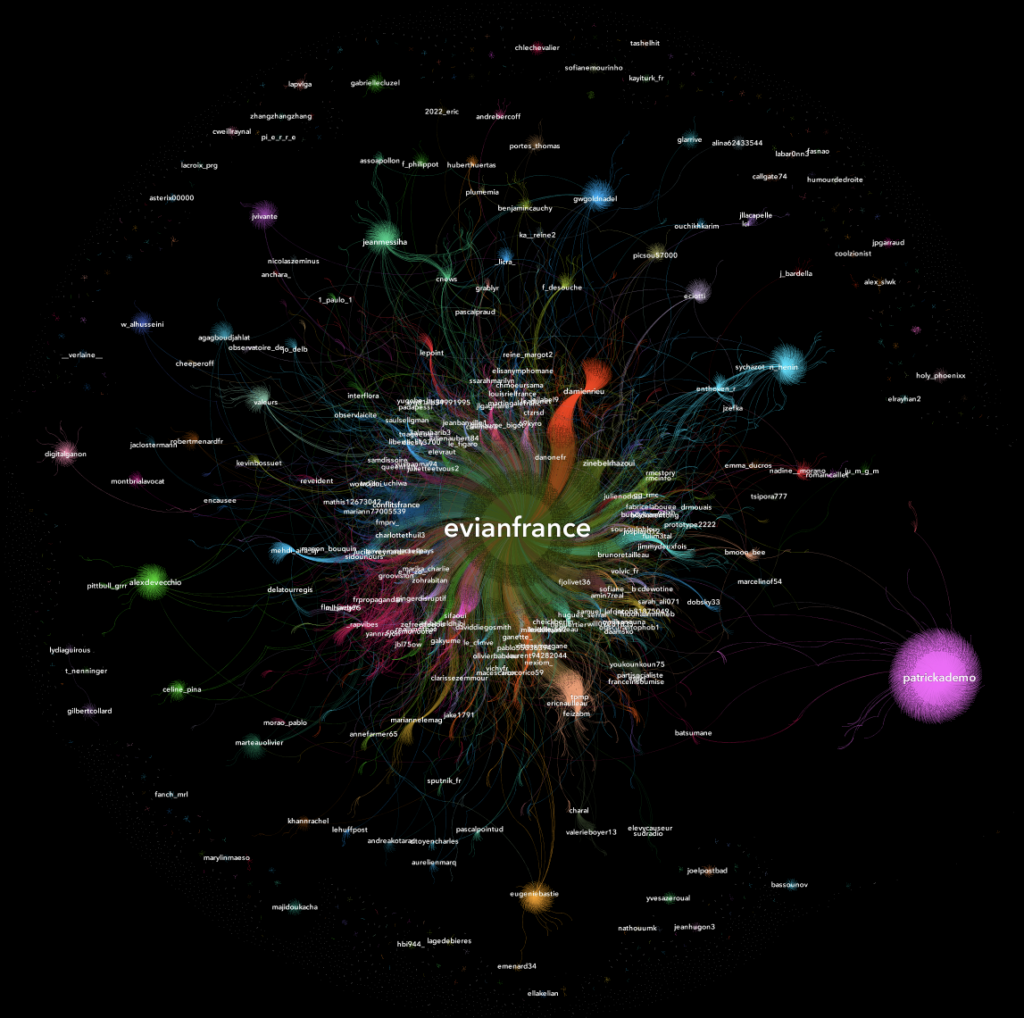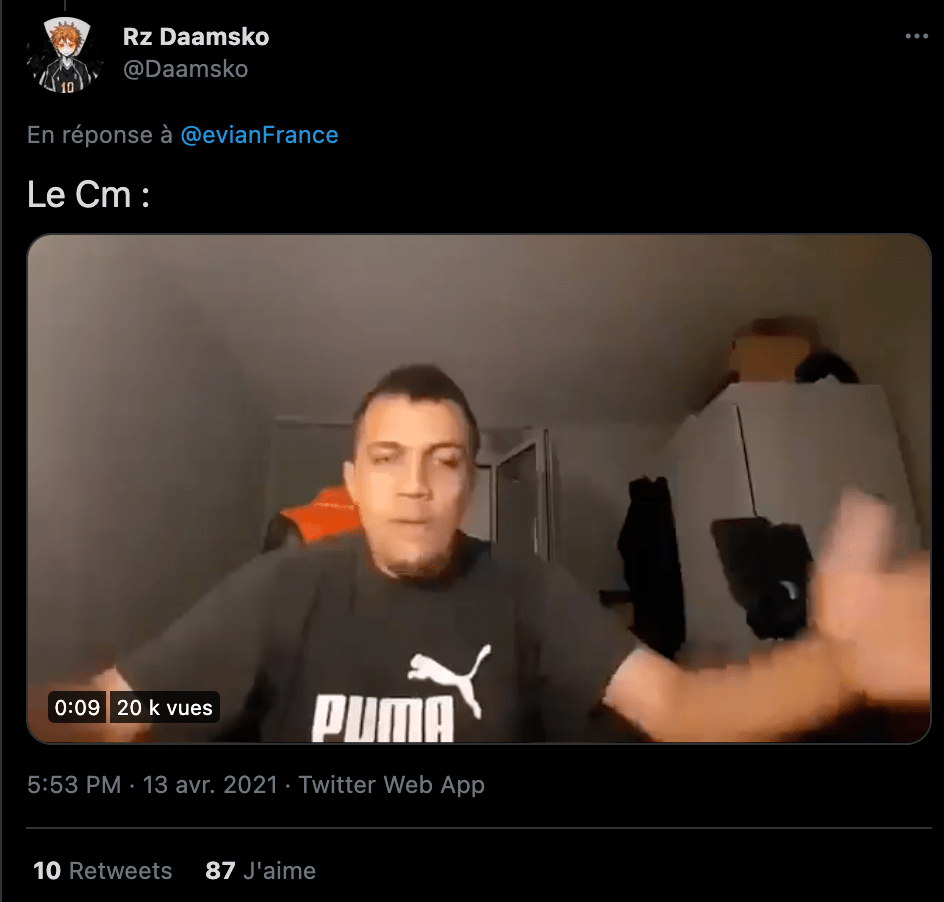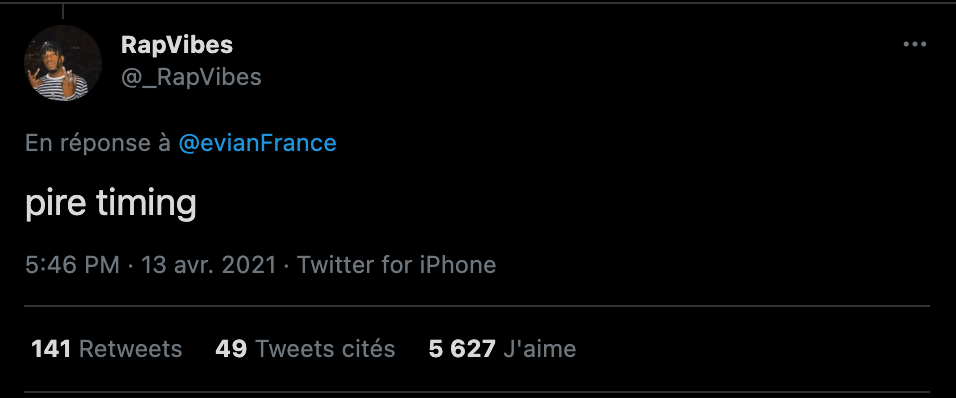Sommaire
Ramadan & Evian: How twitter’s new socio-technical mechanisms influence crisis spread
Two days ago, Evian posted a tweet at an unfortunate moment, as it coincided with the first day of Ramadan. I wanted to explore this case, not only because of the questions it raised but also due to the valuable insights it provides on platform usage and how these platforms influence the spread of crises.

Analysis via Brandwatch
The spread of the controversy followed a fairly typical pattern:
- Negative Reactions: Some individuals, though it’s unclear if they were Muslim, criticized the tweet.
- Polarizing Article: The reactions prompted the publication of an article by CNews, which seemingly appeared out of nowhere. At the time, there were only 2,969 tweets, but the situation was more complex than the number of tweets suggested.
- Antagonistic Responses: Reactionary circles responded, followed by defenders of secularism.
- Commentary: The controversy was analyzed and discussed.

It’s important to note that the controversy surrounding Evian's tweet was real and not fabricated by the extreme right.
Evian faces a paracrisis
Evian is facing what many companies increasingly experience: a communication crisis that transcends its own sphere. Political, activist, or associative spheres are constantly looking for current events to react to or advance their agendas, often dragging companies into controversies. The real grievance, therefore, is not about the interpersonal relationship between the company and these groups but rather their relationship with society as a whole.
The company is confronted with stakeholders who have demands (stakeholder theory states that they are "on demand") that it cannot satisfy because the controversy goes far beyond its prerogatives and powers.
Whatever the company does, some interlocutors will always have grievances or complaints. This is a phenomenon known as a "paracrisis." What should be done in such cases?(This was also the case with Decathlon, involving similar communities.). Nothing but silence, stepping aside, or invoking spectators to appeal to the company’s goodwill or universalism, since a brand or company is not meant to engage in such societal debates, especially if it provides consumer goods.
A completely unprecedented propagation due to the new socio-technical processes of Twitter.
However, the most fascinating aspect of this crisis is not the phenomenon of paracrisis, which is becoming increasingly common. The most interesting part is the unique final mapping of the crisis.
I would like to remind you that this type of mapping shows how actors mention or retweet each other, allowing us to see how the conversation spreads. I added to the methodological note that I included all expressions related to Evian (including some noise) and @EvianFrance.

The rise of quoted tweets.
Thus, Evian occupies a completely central position, and all actors invoked or mobilized it. The reason is quite simple. It comes from the “quote tweet” feature. There were an extremely large number of retweets (all the little green dots around Evian), but also a significant amount of conversations created based on the original tweet.

This means that all the propagations originated from Evian, resulting in an extremely central map for Evian. The only exceptions were the tweet from PatrickAdemo and a few other people, who did not include a mention. I can only recall one other case of this kind, with a digital crisis experienced by the real estate agency La Foret, but it was much smaller. This highlights how much the citation of tweets has increased in just one year.
Those who criticized Evian received many likes, while those who criticized Evian’s response were retweeted.
But the most interesting thing, and what can create significant biases when analyzing the propagation and using mapping tools as I do, is the growing preference for “likes” over retweets. This can disrupt the analysis because our mapping tools do not account for the timing of events (as I do), and they do not consider likes in community engagement. When we observe the tweets that reacted, we realize that they gathered very few retweets but a lot of likes.




Thus, we have accounts with large audiences expressing dissatisfaction with Evian. There are few tweets, making it difficult to map the network and its significance, and also challenging to realize that these tweets have a substantial impact.
There are two perspectives:
- The spectators’ view, who see few tweets and little dissemination.
- The community manager’s view, where the timeline “buzzes” as the likes on the tweets mentioning them flood the community manager.
Conclusion
We can understand how the perception of a “small crisis” can exist both for the analyst interpreting the propagation and for the simple spectator who sees little evidence of dissemination via Twitter, while at the same time, the community manager has a completely different perception because they are viewing the crisis through a dual lens: both through the tweet timeline or monitoring tools and through the notification timeline, where a torrent is at play.
This clearly demonstrates how socio-technical processes (the platform’s interactive features)
- Influence how we publish (citation and anchoring processes).
- Influence the propagation of crises and create methodological biases in analysis (the shift from favorite to like, resulting in fewer retweets but more likes).
- Create different perceptions of the same facts (tweet flow vs. notification flow).
Photo credit: Shutterstock




